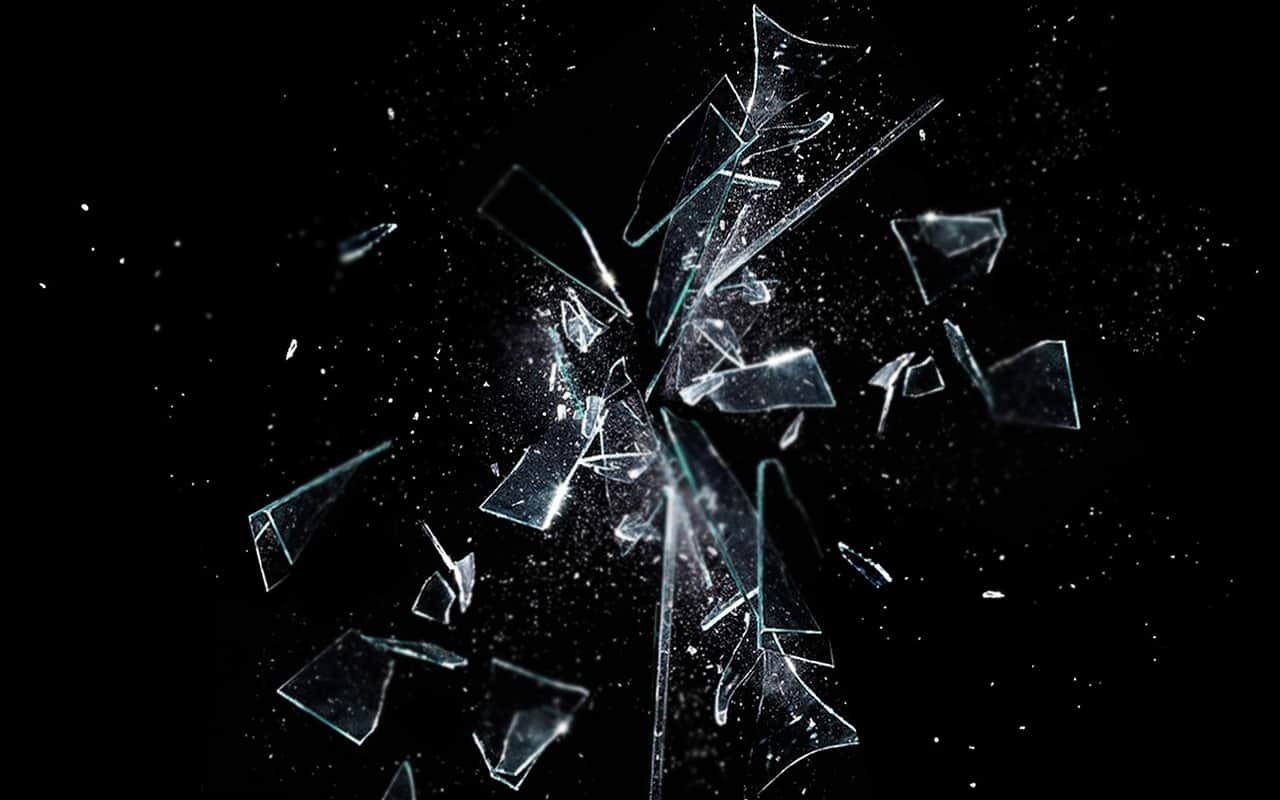Soul Retrieval: 3 Deep Ways to Heal Soul Loss
by
Beneath most headaches is a heartache.
It’s a natural protective mechanism of ours to think our way around wounds instead of feeling our way through them. In this day and age, we just want an escape.
What can we do to stop feeling the pain we’re feeling? How can we change ourselves to be more acceptable? How can we numb ourselves to outside forces beyond our control? These are the questions we often grapple with.
No one wants to feel pain. But most of us carry around heavy clouds with us all day. We can’t quite pinpoint what the source of our suffering is – we just know that it hurts. This pain forms the vague backdrop of our lives and is so persistent, yet subtle, that it becomes the new “norm” for us.
What is this chronic suffering, this persistent emptiness, dissatisfaction, and loneliness that we carry around?
Its name is Soul Loss. And in this article, I’m going to show you how to feel better using a practice known as Soul Retrieval or inner work.
What is Soul Loss?

Whenever we suffer physical or emotional trauma, it is said that a part of our Soul flees the body in order to survive the experience. With every cut and wound, our essence and vitality grow weaker. This process is called “Soul Loss.”
Soul Loss is also known, in psychological terms, as dissociation. It’s what happens when we become disconnected from the very Core of ourselves, the source of our vitality, our Soul.
Soul Loss, contrary to popular belief, does not mean literally losing your Soul. Instead, it refers to the experience of losing touch with your Soul.
Your Soul is always there in the backdrop of your life, but it’s not always accessible due to the psychological traumas, abuses, and blockages that have taken root within you.
So how do we regain connection with our Souls? We do this through a practice of inner work, of Soul Retrieval.
What is Soul Retrieval?

Soul Retrieval is a shamanic term that refers to reintegrating lost Soul parts back into a person to create healing. These days, however, Soul Retrieval can be understood as the practice of reintegrating dissociated and repressed parts of the psyche (a Greek word that also means Soul) back into everyday consciousness for greater Wholeness.
There are numerous perceptions of Soul Retrieval, but the one I subscribe to is that of making the unconscious conscious. When a certain part of us is unconscious it can wreak havoc in our lives and starve us of our fundamental vitality. We wind up feeling confused, lost, anxious, depressed, and overwhelmed by these shadowy parts of us. By bringing them to consciousness, by practicing Soul Retrieval, we are removing the blockages that obscure our Souls and creating more inner peace and harmony.
Soul Loss and Shamanism

When I was a young boy my Abuela (grandmother), would do something very strange. Every time I fell or hurt myself, she would quickly grab me by the head and whisper into my ear a prayer. This prayer was to call my Soul back.
I was always puzzled by her sudden prayers until she explained to me why she did them. In shamanic cultures, Soul Loss is understood to be a spiritual illness. In other words, when a part of our Soul fragments, all kinds of emotional, physical, and mental diseases occur from the diminishment of our life force energy. It is therefore seen as vital for parts of the Soul to return back to wholeness again.
The difference between the shamanic perspective of Soul Loss and the modern perspective of Soul Loss is that in the shamanic worldview, the Soul can be fragmented, even travel to other dimensions and get lost. However, in the modern perspective, the Soul (or Self) remains whole and intact, but it is our psyche (our mind) that fragments and needs to be healed in order to regain access to the Soul.
Whichever angle you prefer, the reality is that we all experience a level of Soul Lossin our lives. Many people don’t feel whole. Ask yourself this question, “When was the last time I felt absolutely whole and complete?” If you’re like most people, that time may have been back in childhood. Perhaps you can’t even remember a time when you ever felt whole.
Because of the mass phenomenon of Soul Loss, issues such as addiction, chronic sickness, diseases, abusive relationships, crime, shopaholism, and workaholism run rife in our society. All of these issues stem from Soul Loss.
9 Causes of Soul Loss

In shamanism, Soul Loss describes the fragmentation of the soul. And interestingly, Soul Loss shares similarities with what contemporary psychology calls “dissociation”: the splitting of the psyche in response to traumatic, shocking, or difficult experiences. This is often the cause of many Core Wounds that affect us later as adults.
So what causes Soul Loss? Here are some common examples:
- Any form of abuse, e.g., sexual, emotional, physical or mental
- An event of prolonged grief, pain, and fear that made you feel helpless or impotent
- Deep-seated addictions e.g., substance dependency, gambling, eating
- A near-death or out-of-body experience
- Being forced to act against your morals
- An experience of intense rejection or abandonment
- Witnessing the unexpected death of someone
- A sudden and shocking accident
- Entering a relationship without strong personal boundaries (resulting in an unhealthy relationship and losing your personal power)
Soul Loss, or dissociation, are devices that the brain uses to survive potentially destructive traumatic events.
In other words, Soul Loss happens to protect you initially, rather than to hurt you. This is a natural protective mechanism.
However, every wound must be healed, otherwise, it festers. When we neglect to heal these “blocked off” parts of ourselves and give them air, we are left with a chronic feeling of unwholeness. Eventually, we can suffer from chronic issues such as anxiety, depression, physical, and mental illnesses as a result.
A simple example of Soul Loss can be found in cultures that frown upon expressing emotions like “anger.” A child, for instance, will quickly learn that expressing anger results in punishment or withdrawal of love by their parents. As a result, this child will eventually learn to “split off” this “unacceptable” part of themselves until they no longer accept this emotion as belonging to them. What happens to this anger? It is suppressed. For this reason, Soul Loss plays a huge role in creating our Shadow Selves.
Soul Loss Treatment (Two Approaches)

Often psychotherapy is used to try and treat Soul Loss. But while the psychotherapeutic approach can sometimes work, often it reaches a stalemate. Why? Because psychotherapy perceives this “missing part” as being lost somewhere in the individual, rather than preserved in the realms of the collective unconscious. Unless the psychotherapist works with the collective unconscious (as Jungian and transpersonal therapists often do), they aren’t working with the whole person.
The shaman, on the other hand, assumes that Soul Loss is a spiritual illness and that the dissociated parts can leave the body and wander into other realms (non-ordinary reality), as a result of shock or trauma. These realms are often inaccessible and are guarded by heavy defenses that make it difficult (or impossible) for the affected person to go through on their own, without the guidance of a Shaman.
Over time, the Soul Loss resulting from not integrating these traumatic experiences (whether through psychotherapy or shamanic intervention) can become obstacles in our personal development. This Soul Loss can result in distressing, debilitating, and incapacitating defense mechanisms that manifest as anxieties, depression, addictions, and compulsions as well as chronic fatigue.
Why Does the Soul Fragment?

After reading about Soul Loss, it’s easy to think of it as something bad that has happened to us. However, here it’s important to realize that Soul Loss is in fact, a gift.
In the same way that you become unconscious when you’re experiencing immense amounts of physical pain, your psyche is wise and knows its limits. Your mind knows what it can and can’t handle, so it fragments and dissociates (or scatters) as a survival mechanism to protect itself from feeling the fullness of pain.
This splitting of the psyche only becomes an obstacle when the pieces aren’t actively retrieved. This is what leads to chronic depression, suicidal tendencies, post-traumatic stress syndrome, addictions, immune deficiency problems, and grief that refuses to heal.
However, the retrieval of these lost pieces is not the end of the work. We must then learn how to integrate them back into our lives in order to recover the vital power, potential, and energy they possess.
Without these lost parts, we don’t feel whole. Instead, we feel weak, depressed, anxious, or empty. We lose touch with our Souls. We feel as if something is missing, and we fill that emptiness with anything we can.
What Happens After Soul Retrieval?

As shamanic teacher and therapist Sandra Ingerman once commented about soul retrieval, “What I have found after a soul retrieval is that one cannot ‘numb out’ anymore.”
This is one of the many benefits of soul retrieval: we become more present, centered, and regain our aliveness. Life ceases to be a dull, monotonous, depressing experience. Instead, life is a gift, a mysterious adventure, something to be savored and embraced.
Once we’ve recovered these lost pieces of ourselves, we can experience many other benefits:
- Feeling more grounded in our body and more “solid”
- Feeling energized, awake, and more alive
- Greater presence in the world
- More awareness of our choices, behaviors, and decisions
- Lightness and joy
- Awareness of huge amounts of energy you didn’t know you had
- Mental clarity and a new sense of hope
- Physical wellbeing and less sickness
- A sense of purpose and renewed direction
- Deeper sleep
- Overcoming addictive dependencies (drugs, food, work)
- A new-found wholeness and sense of belonging
In order to undergo Soul Retrieval, you must have an experienced guide. Shamans are not the only healers that can perform Soul Retrieval. Other healing practices such as hypnosis, witchcraft, and psychoanalysis all have methods for integrating split-off or lost parts of the self.
The Soul Retrieval Journey – 3 Methods

To retrieve a lost inner part as a shaman, they typically enter trance states with the client. This altered state of consciousness helps them to journey into one of the three spirit worlds (typically the underworld) where they are accompanied by spirit helpers with the intent to retrieve a certain part of the Soul. They narrate the whole journey to the client or visualize it through active imagination.
In these Soul Retrieval journeys, shamans often encounter strong, often harsh energies that manifest themselves through the archetypal images of monsters, reptiles, dragons, and other dangerous beasts. These are the guardians of the Soul, or in psychotherapy, they are known as defense mechanisms of the psyche. The shaman must overcome these with the help of their spirit helpers, in order to persuade the Soul part to come back.
Once they have retrieved the Soul part, they reintegrate it together with the client. This is usually done energetically (by blowing the energy into the body), through ceremony, or chanting.
To retrieve a lost inner part as a psychotherapist or healer, numerous methods are applied such as inner child work, gestalt therapy, archetypal work (such as in internal family systems therapy), visualization, sound healing, and art therapy.
Although Soul Retrieval is best done with the guidance of an experienced healer or trained professional, it is possible to facilitate this process, in part, yourself.
Here are some Soul Retrieval practices you can try by yourself:
1. Meditation and visualization journeys
Using the power of the imagination, you can create more inner wholeness and call back lost parts of yourself.
Did you know that the mind cannot distinguish imagination from reality? We can take advantage of this psychological loophole and practice Soul Retrieval simply by taking ourselves on a guided adventure.
To practice Soul Retrieval, you might like to either find a pre-recorded journey (such as on youtube) or create one yourself.
Here are the basic ingredients for creating your own meditation/visualization Soul Retrieval journey:
- Imagine yourself walking through a spring-like field into a dark cave.
- The deeper you go into the cave, the deeper you find yourself descending into yourself.
- Along the way, you see a light in the distance. You keep walking, and it keeps getting bigger.
- Sometimes, during your cave walk, you find objects. These objects represent different parts of yourself. For example, you might find a box of matches that represents your rage, a broken doll that represents your inner child, and a paintbrush that represents your lost inner artist.
- Collect all of these items in the bag you have with you. Don’t worry, the bag can hold everything, no matter how big or small, that you find. (Also, it’s not necessary to know precisely what each object represents. You can think about this afterward).
- Eventually, you reach the light which consumes the whole tunnel. This white light is your Soul.
- Take the objects in your bag and throw them, one by one, into the light. Each of these objects/parts of you will be immediately reintegrated once they dissolve within the light.
- Once you have let go of the last object, breathe deeply, and feel yourself being revitalized by this newfound increased wholeness and inner harmony.
- Once you’re reading, step into the light, breathe deeply, and allow it to radiate through your entire body, binding with your cells, your DNA, permeating through all parts of your being.
- Then, open your eyes. Return to the room. Take a few minutes to reflect on what you’ve experienced. I encourage you to journal about what you’ve undergone.
2. Work with your inner archetypes
Archetypes can be thought of as the types of energy that you carry within you: they all work together to form your character.
Common archetypes include the mother, the mentor, the bully, the lover, the warrior, the rescuer, the victim, the wounded child, and so on.
We all possess a colorful array of archetypes that possess both good and bad qualities. All archetypes, even the seemingly negative ones (such as the addict and the prostitute) have gifts to share with us. We need to embrace all of them to discover more wholeness; to remove the blockages that obscure our Souls.
There are many ways to uncover the buried archetypes within ourselves – as well as balance the ones we already possess. Some methods include pathworking with different archetypes (through visualization), journaling and dialoguing with your archetypes, and noticing how they manifest within your behavior.
Read our archetypes guide for more in-depth help.
3. Entering altered states of consciousness
This is a powerful way to reconnect with your Soul and practice Soul Retrieval as it bypasses the defense mechanisms of the fragmented ego. However, I must warn you to go slowly and be cautious with this practice. It is possible to overwhelm yourself, so take care of yourself and be responsible.
There are numerous ways to enter trance states which I explore more in-depth in my article How to Induce a Trance State For Deep Psychospiritual Work. They include:
- Breathwork
- Mantra and prayer
- Primal rhythms, beats, and sounds
- Self-hypnosis
- Visualization
- Incense and essential oil
- Physical and emotional catharsis
- Plant medicine (such as legal psychedelics)
I recommend trying out one of these practices at a time and exposing yourself to small quantities. You can slowly increase through time and experience. (If you suffer from any form of psychosis, please consult your psychologist or social worker first.)
Most importantly, when entering an altered state of consciousness, you must have a clear objective. Remember that the purpose of it is to practice Soul Retrieval and orient your whole experience around that central purpose – that way, you’ll actually benefit without getting lost in the high of a strange state of being.
And, that’s it! Be gentle, go slow, record your progress, and see what happens. Remember that there’s always additional guidance out there if you need more support.
***
Soul Retrieval is only successful if the person who is healed consciously decides to use this newfound energy to cultivate healthy choices that support their wholeness. This is a two-way dance!
If you’ve done a lot of inner work, Soul Retrieval might come right at the end of your journey. On the other hand, Soul Retrieval might be the first step you take in order to rediscover your wholeness.
Regardless of where you are on the path, I hope this article has helped you to better understand this powerful practice.















